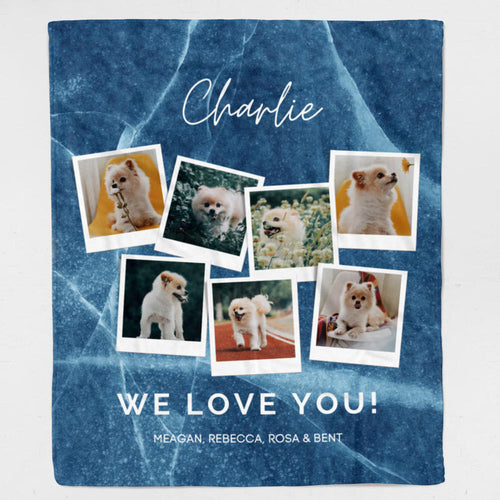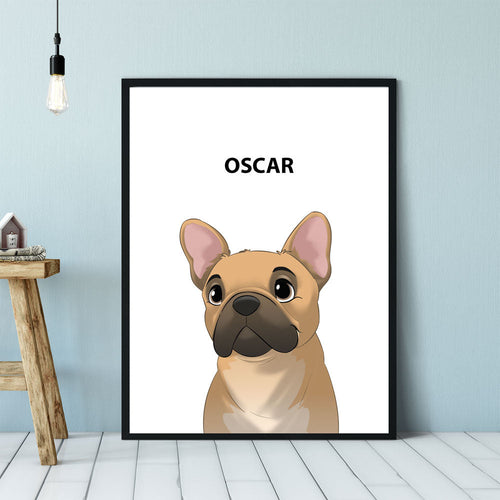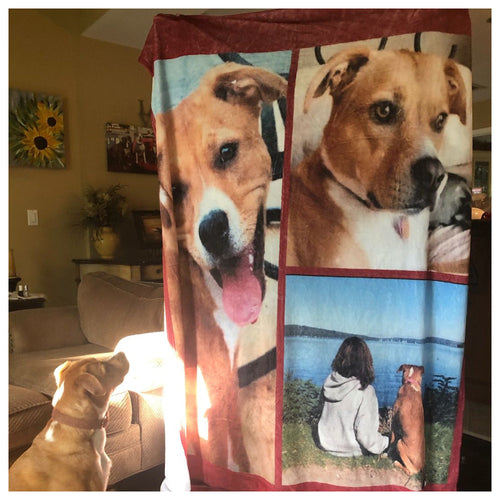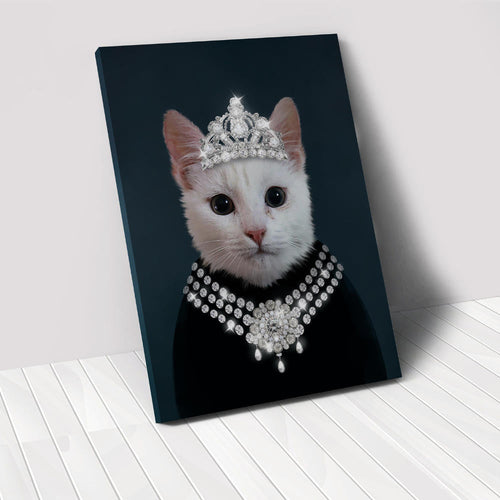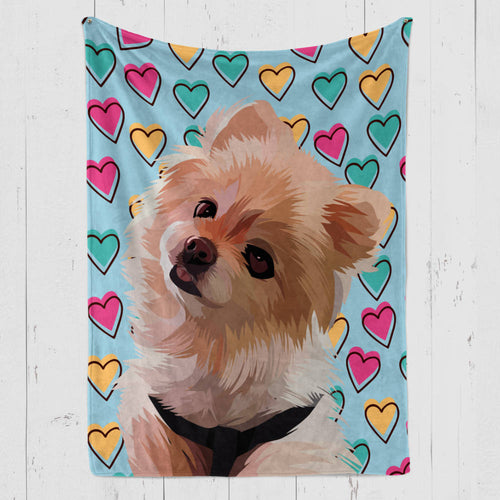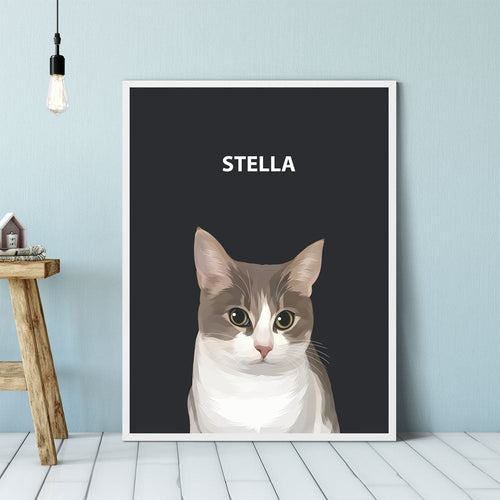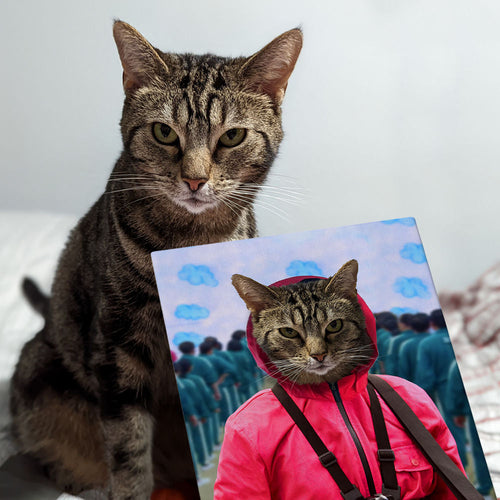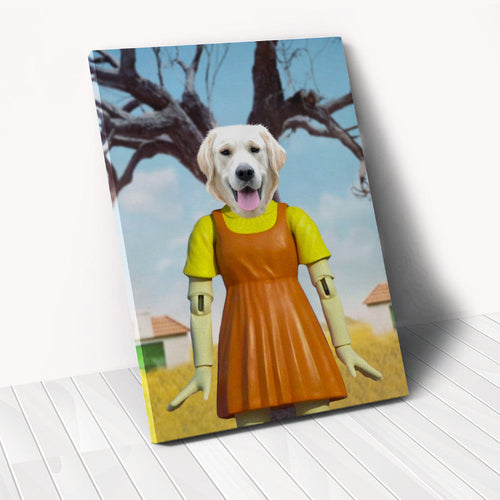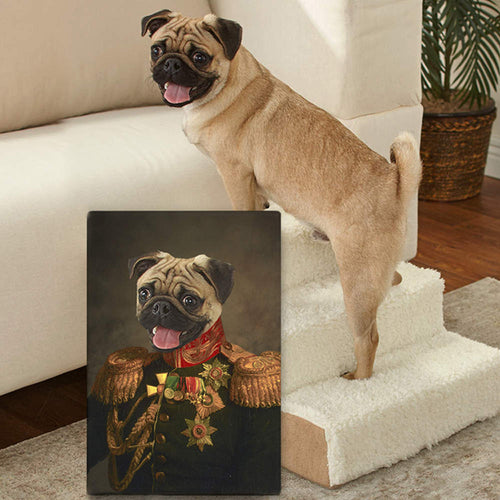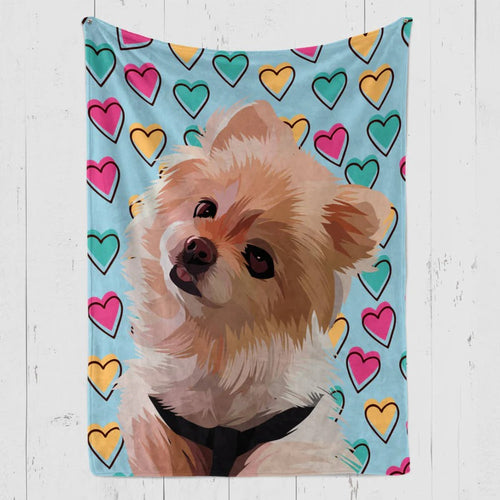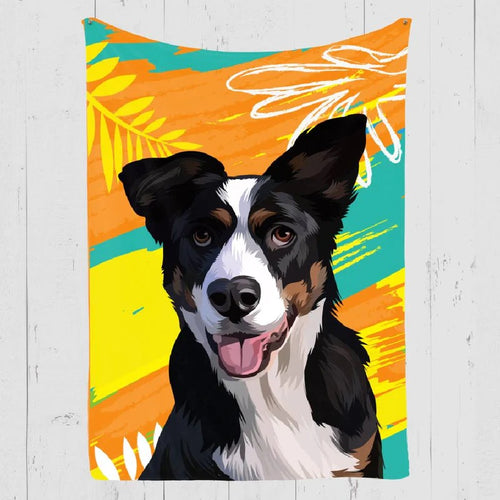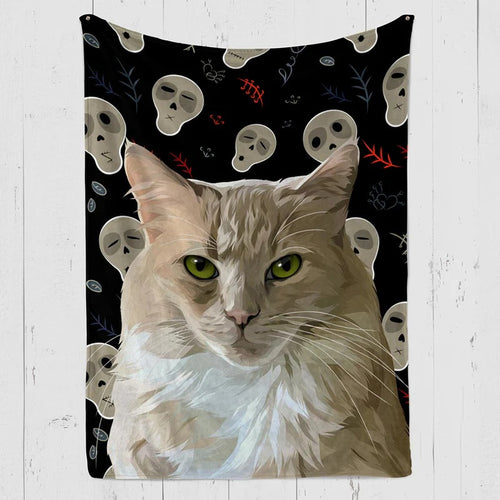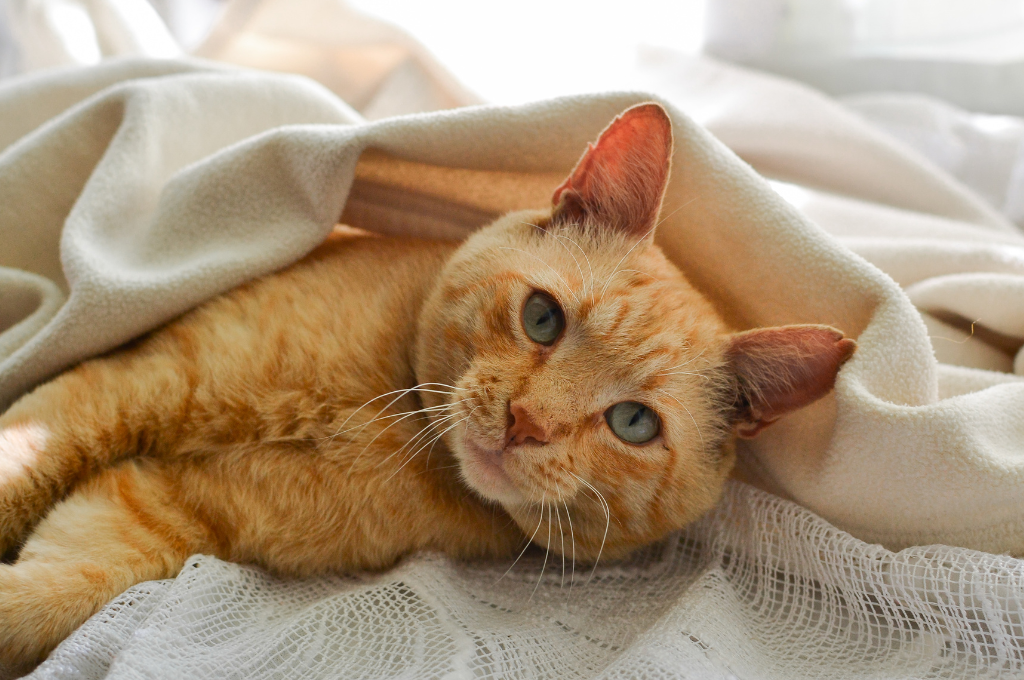
The fatal condition of bloat, which kills approximately half of all affected dogs, should be well-known to every dog owner. The medical term for bloat is gastric dilatation-volvulus (GDV), which occurs when an enlarged stomach twists inside the body. This places excessive stress on internal organs and can cut off circulation to some or all of the body's tissues. If the caudal vena cava, a major vein that returns blood to the heart, is blocked, shock can develop rapidly. Up to 40% of cases of GDV are predicted to end in death despite medical intervention.
Dog Breeds With High Risk of Bloat
1. Great Dane

When it comes to dogs, Great Danes are the big, gentle giants that everyone loves. These canines are notoriously short-lived and can develop a predisposition to bloat as they become older. A Great Dane has a 42.4 percent lifetime risk of developing bloat.Two Great Danes may develop a bloat-inducing habit of gulping down their food or water. Therefore, a slow feeder bowl is ideal for Great Danes.
2. Boxer

Boxers are the cutest, most energetic dogs around. Their narrow waists and deep chests make them more likely to balloon. It has been shown in certain research that feeding or watering a dog immediately after exercise does not increase the risk of bloat. There's no harm in erring on the side of caution, though.
However, some vets advise waiting 30-60 minutes after feeding a dog before letting it play.The same length of time (3 hours) should pass between exercise and feeding for dogs. This will protect Boxers from GDV caused by hyperventilation.
3. Doberman Pinschers

Bloat is common in Doberman Pinschers because of their stocky physique. They are extremely energetic dogs, and their deep chests pose a health danger. Doberman Pinschers may do better if they take numerous smaller meals throughout the day instead of two large ones, in addition to utilizing a slow feeder. Because of their hunger, they may consume too rapidly, taking in too much air.
4. German Shepherds

German Shepherds are deep-chested, energetic canines with a reputation for stamina and toughness. They are a common working dog, thus they are put to work in jobs that need high levels of activity and endurance. Therefore, it is crucial to provide them with enough of water throughout the day. Having easy availability to water at all times can reduce the likelihood of bloat by preventing animals from drinking too much water at once.
5. The Standard Poodle

Standard Poodles are excellent pets because of their amiability and intelligence. Standard Poodles, the largest kind of Poodle, are more likely to suffer from bloat than smaller varieties. Miniature and Toy Poodles almost never suffer from bloat.
While Standard Poodles have a reputation for being refined, in reality, they are rather lively dogs who like a good romp in the park. Therefore, owners should monitor their pets' eating and drinking habits and make sure their pets don't consume too much too quickly, especially when they've been exercising.
6. Weimaraner

Another canine breed with a deep chest and a propensity for bloat is the Weimaraner. The breed's reputation for friendliness and lack of fear makes it a popular choice as a companion animal for outdoor enthusiasts like hunters and hikers.
Because of their high energy expenditure, it is recommended that they spread their meals out over the day rather than gorge themselves at one sitting.
8. Basset Hounds

Adult Basset Hounds have a modest activity level, yet their deep chests make them vulnerable to bloat. They don't have a trim physique and are more likely to put on extra pounds.
Because their stomachs have more capacity to move about in their abdomens, slimmer dogs appear to be more susceptible to bloat. Dogs who are overweight often have excess fat in the abdominal area, making it difficult for them to move freely. Obesity is connected to many other chronic problems, so keeping an eye on your Basset Hound's weight and making sure it gets plenty of high-quality food is still crucial.
9. Irish Setter

Irish Setters have a reputation for being friendly and approachable. They are great companions for kids and make ideal pets for families. These stunning canines have a deep chest and are more likely to suffer from bloat than other dog breeds.
Anxious and stressed-out dogs are at a higher risk of bloat. Since Irish Setters are social animals at heart, separation from their family can cause them a great deal of anxiety. Stress from being alone for too long may increase the risk of bloat in Irish Setters, in addition to causing separation anxiety and destructive behaviors.
10. Irish Wolfhound

Irish Wolfhounds are arguably of the nicest canines once you get past their frightening stature. They thrive in social environments and don't perform well when left alone for lengthy periods of time.
Even though Irish Wolfhounds are friendly and simple to teach, novice pet owners should steer clear due to their large size and special demands. Irish Wolfhounds have a higher risk of developing bloat, bone and hip problems, and heart disease as they become older.
11. Saint Bernard

Another huge dog breed at increased risk for bloat is the Saint Bernard. While their typical longevity is less than that of many other dog breeds, their overall health is excellent.
In Switzerland, at the Hospice of St. Bernard, Saint Bernards have a long tradition of service to humans in the roles of hospice and rescue dogs. Modern Saint Bernards continue to have a serene attitude and a reputation as a good-natured, diligent breed.
12. Akita

Akitas are formidable canine companions. Once you've earned their trust, you'll have their undying loyalty and devotion to your family. They are naturally reserved with strangers, but their strong protective drives make them reliable watchdogs.
Unfortunately, Akitas are a breed predisposed to bloat. Dogs like this benefit greatly from a high-protein diet because of their high activity levels. Look for dry dog food that doesn't include a fat source (such chicken fat or canola oil) listed as one of the first four components. More occurrences of bloat have been linked to high-fat dry dog food.
Signs of bloat in dogs
What is Bloating in Dogs?
A medical and surgical emergency, bloat is also known as gastric dilatation-volvulus (GDV) complex. When the stomach is full with air, the pressure prevents blood from flowing back to the heart from the abdomen and the lower body. The dog goes into shock as blood collects near the tail, decreasing the amount of blood available to the organs.
A second terrifying event occurs, and it is just as heartbreaking to witness. The spleen and pancreas lose blood supply as the stomach flips, dragging them with it. Some highly harmful hormones are produced by an oxygen-deprived pancreas. One of them is aimed directly at the heart and can stop it in its tracks. In reality, a dog's heart might abruptly cease beating even after it has undergone effective therapy and appeared to be safe. Without treatment, even the mildest instance of bloat is fatal for dogs.
Signs and Symptoms
Dog bloat is not one of those situations that calls for a patient wait at home. The chronology of the ailment is really quick. There is no time to waste if your dog is showing symptoms of bloat. The disease can become life-threatening in as little as an hour or two, according to the Tufts University School of Veterinary Medicine.
According to the American College of Veterinary Surgeons (ACVS), the first symptoms of bloat in your dog may be fidgeting or pacing. Dry heaves and excessive drooling are frequent symptoms of bloat in dogs, as is the occasional vomiting of a tiny quantity of froth or mucus. A bulging tummy is another possible symptom, however it may be hard to spot in larger or overweight dogs, as noted by Romine.
These symptoms, and others, become more severe as bloat progresses:
- Whining
- Drooling too much
- Continuous dry heaving
- Panting
- Collapse due to shallow breathing
The severity of your dog's bloat cannot be determined by its symptoms alone. If you suspect that your dog's stomach has twisted, an X-ray will reveal the truth.
"If your dog suddenly becomes agitated or painful and is trying to vomit, see a veterinarian immediately," says Romine. "Time is of the essence with these cases." More than 80% of dogs with bloat may be saved with prompt treatment, according to the AKC Canine Health Foundation.
What to do if you suspect bloat in your dog?
It is critical to act quickly if you think your dog has bloat since this disease can be fatal. Specifically, you should:
- Get in touch with your local animal hospital or urgent care center immediately. Professional assistance is required, and time is of the importance.
- Reduce the amount of noise and movement your dog makes. Do not engage in any physically demanding activities, since doing so may worsen your health.
- Avoid feeding your dog any kind of food or drink. The danger of stomach torsion increases, and the bloating gets much worse.
- Too much pressure might cause more damage, so be gentle while you massage your dog's tummy to remove trapped gas.
- Secure your dog for the trip to the vet if at all feasible. While you soothe your pet, have someone else drive.
- Keep an eye on your dog's respiration and other vitals while you travel. If they pass out or start having trouble breathing, do CPR if you know how, but keep going to the vet.
How Is Bloat Treated?
Dogs with bloat cannot be treated successfully at home. It's an immediate need for veterinarian attention. The measures your vet takes to treat bloat will vary depending on how far along the problem is.
Diagnosis and Stabilization
First, administer intravenous (IV) fluids to stabilize your dog's vitals; many dogs in a state of bloat-induced shock. If the stomach is twisted in addition to being swollen, your veterinarian will be able to tell by tests and x-rays. Since bloat produces irregular heartbeats in roughly 40% of dogs, an echocardiography (ECG) may also be necessary to check heart function in your dog.
Stomach emptying
The idea is to empty the stomach to reduce pressure if the stomach hasn't already twisted in your dog. After seducing your dog, your vet will insert a tube into its stomach and use a pump to remove the contents. A needle can be inserted subcutaneously into the stomach to accomplish the same effect.
Surgery
After a stomach is emptied, gastropexy (a procedure to avoid bloating) is often performed. Stomach attachment to abdominal wall prevents stomach from twisting during surgery. "If the stomach is only decompressed but not surgically tacked in place, there's a 75 percent chance your dog will develop bloat again," adds Romine. "But with gastropexy, that rate drops to 6 percent."
If your dog's stomach is twisted, he or she will require surgery to correct the problem. If there's damage to the gastrointestinal tract or spleen, your vet will remove it. Your veterinarian will be able to conduct a gastropexy when the immediate threat has been removed.
Key Takeaway
The life-threatening illness gastric dilatation-volvulus (GDV), sometimes known as a "stomach flip," can afflict a wide variety of dog breeds. Although no dog is completely safe against GDV, the likelihood of contracting the virus is higher in deep-chested breeds, including Great Danes, Boxers, Doberman Pinschers, and German Shepherds. All dog owners, but especially those with susceptible breeds, need to be familiar with GDV's causes, symptoms, and preventative actions. When dealing with this life-threatening ailment, time is of the essence in ensuring the best possible outcome for your dog partner.
Frequently Asked Questions:
Which dog breeds are most prone to GDV?
Great Danes, Boxers, Doberman Pinschers, and German Shepherds, characterized by deep chests, have a higher susceptibility to GDV.
How is GDV typically diagnosed?
GDV is usually diagnosed through a physical examination, X-rays, and other diagnostic methods that identify stomach dilatation and twisting.
Is GDV a life-threatening ailment?
Yes, GDV is a life-threatening condition that demands immediate veterinary attention.
What is the treatment for GDV in affected breeds?
Treating GDV in affected dogs involves untwisting the stomach, removing damaged tissue, and securing it to the body wall through emergency surgery.
Can GDV be prevented in predisposed breeds?
Smaller, more frequent meals and avoiding strenuous exercise immediately after eating can help mitigate the risk of GDV in breeds with a predisposition to it.
Are there surgical options to prevent GDV?
Veterinarians may perform a preventative surgical procedure called gastropexy to reduce the chances of GDV in susceptible breeds.
Is GDV hereditary in these breeds?
While GDV is more common in breeds with a predisposition, it is not solely influenced by genetics; other factors like the dog's environment and upbringing also play a role.
Can GDV occur in breeds not predisposed to it?
Although less common, GDV can occur in breeds not genetically predisposed to it. It is essential for all dog owners to be aware of the signs and symptoms to look for in their pets.
Reference Links:
Similar Articles
Latest Review on Woof Blankets
To have such a masterpiece by my side every day is a gift for me and my memories with Rex. Thank you WoofBlankets for such an opportunity to recreate his image on a blanket.Lara o’ Miguel US, California
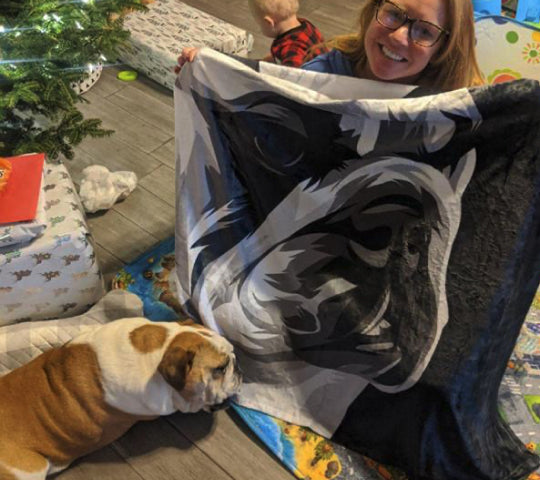
COLLECTION WORTH EVERY PENNY
BEST SELLERS
-
Woofy Single Color Custom Pet Blanket
![Woofy Single Custom Pet Blanket – Woof Blanket]()
- -41%
BlanketsSHOP NOW- Regular price
- from $64.95
- Sale price
- from $64.95
- Regular price
-
$109.95 - Unit price
- per
Sold out -
The French Sailor - Custom Pet Portrait
![]()
- -25%
CanvasSHOP NOW- Regular price
- from $59.95
- Sale price
- from $59.95
- Regular price
-
$79.95 - Unit price
- per
Sold out -
Summer Time Custom Pet Blanket
![Summer Time Custom Pet Blanket]()
- -39%
BlanketsSHOP NOW- Regular price
- from $69.95
- Sale price
- from $69.95
- Regular price
-
$114.95 - Unit price
- per
Sold out -
Pet Memorial Custom Photo Collage Blanket
![Personalized pet memorial quilt with photos]()
- -41%
BlanketsSHOP NOW- Regular price
- from $64.95
- Sale price
- from $64.95
- Regular price
-
$109.95 - Unit price
- per
Sold out -
4th of July Custom Pet Blanket
![4th of July Custom Pet Blanket Online]()
- NEW
- -39%
BlanketsSHOP NOW- Regular price
- from $69.95
- Sale price
- from $69.95
- Regular price
-
$114.95 - Unit price
- per
Sold out -
Modern Pet Portraits
![Cute Dog Modern Pet Portraits Online]()
- NEW
- -36%
CanvasSHOP NOW- Regular price
- from $59.95
- Sale price
- from $59.95
- Regular price
-
$93.95 - Unit price
- per
Sold out -
The Admiral - Custom Pet Portrait
![The Admiral - Custom Pet Portrait Online]()
- NEW
- -25%
CanvasSHOP NOW- Regular price
- from $59.95
- Sale price
- from $59.95
- Regular price
-
$79.95 - Unit price
- per
Sold out -
Woof Splash Custom Pet Blanket
![Woof Splash Custom Pet Blanket]()
- -39%
BlanketsSHOP NOW- Regular price
- from $69.95
- Sale price
- from $69.95
- Regular price
-
$114.95 - Unit price
- per
Sold out -
The Policeman - Custom Pet Portrait
![]()
- NEW
- -25%
CanvasSHOP NOW- Regular price
- from $59.95
- Sale price
- from $59.95
- Regular price
-
$79.95 - Unit price
- per
Sold out -
The General - Custom Pet Portrait
![]()
- NEW
- -25%
CanvasSHOP NOW- Regular price
- from $59.95
- Sale price
- from $59.95
- Regular price
-
$79.95 - Unit price
- per
Sold out -
Woof Love Custom Pet Blanket
![Woof Love Custom Pet Blanket]()
- -39%
BlanketsSHOP NOW- Regular price
- from $69.95
- Sale price
- from $69.95
- Regular price
-
$114.95 - Unit price
- per
Sold out -
The Ambassador - Custom Pet Portrait
![The Ambassador - Custom Pet Portrait Online]()
- NEW
- -25%
CanvasSHOP NOW- Regular price
- from $59.95
- Sale price
- from $59.95
- Regular price
-
$79.95 - Unit price
- per
Sold out -
Fall In Love Custom Pet Blanket
![Fall In Love Custom Dog Blanket]()
- NEW
- -39%
BlanketsSHOP NOW- Regular price
- from $69.95
- Sale price
- from $69.95
- Regular price
-
$114.95 - Unit price
- per
Sold out -
Cartoonized Pet Portraits (New)
![Cartoonized Pet Custom Portraits Online]()
- -36%
SHOP NOW- Regular price
- from $59.95
- Sale price
- from $59.95
- Regular price
-
$93.95 - Unit price
- per
Sold out -
The Classy Lady - Custom Pet Portrait
![The Classy Lady]()
- NEW
- -25%
CanvasSHOP NOW- Regular price
- from $59.95
- Sale price
- from $59.95
- Regular price
-
$79.95 - Unit price
- per
Sold out -
The Duke - Custom Pet Portrait
![The Duke - Custom Pet Portrait]()
- NEW
- -25%
CanvasSHOP NOW- Regular price
- from $59.95
- Sale price
- from $59.95
- Regular price
-
$79.95 - Unit price
- per
Sold out -
Dog In Suit- Custom Pet Portrait
![Dash Dog In Suit- Custom Pet Portrait Online]()
- NEW
- -25%
CanvasSHOP NOW- Regular price
- from $59.95
- Sale price
- from $59.95
- Regular price
-
$79.95 - Unit price
- per
Sold out -
The Princess - Custom Pet Portrait
![]()
- NEW
- -25%
CanvasSHOP NOW- Regular price
- from $59.95
- Sale price
- from $59.95
- Regular price
-
$79.95 - Unit price
- per
Sold out -
Modern Pet Portrait with One Mug
![Modern Pet Portrait with One Mug]()
- -25%
Print MaterialSHOP NOW- Regular price
- from $99.95
- Sale price
- from $99.95
- Regular price
-
$133.95 - Unit price
- per
Sold out -
The Aristocrat - Custom Pet Portrait
![The Aristocrat - Custom Pet Portrait At Best Price]()
- NEW
- -25%
CanvasSHOP NOW- Regular price
- from $59.95
- Sale price
- from $59.95
- Regular price
-
$79.95 - Unit price
- per
Sold out -
Single Color Custom Blanket with 1 Mug
![Single Color Custom Blanket with 1 Mug]() BlanketsSHOP NOW
BlanketsSHOP NOW- Regular price
- from $99.95
- Sale price
- from $99.95
- Regular price
-
- Unit price
- per
Sold out -
Single Color Custom Blanket with 2 Pillows
![Single Color Custom Pet Blanket with 2 Pillows]()
- -21%
BlanketsSHOP NOW- Regular price
- from $99.95
- Sale price
- from $99.95
- Regular price
-
$125.95 - Unit price
- per
Sold out -
The Dog in Suit Custom Pet Mug
![]()
- -20%
MugsSHOP NOW- Regular price
- $39.95
- Sale price
- $39.95
- Regular price
-
$49.95 - Unit price
- per
Sold out -
Angel Custom Pet Mug
![]()
- -20%
MugsSHOP NOW- Regular price
- $39.95
- Sale price
- $39.95
- Regular price
-
$49.95 - Unit price
- per
Sold out -
This Human Belongs To - Custom Pet Mug
![]()
- NEW
- -20%
MugsSHOP NOW- Regular price
- $39.95
- Sale price
- $39.95
- Regular price
-
$49.95 - Unit price
- per
Sold out -
It's Not Dog Hair Custom Pet Mug
![]()
- NEW
- -20%
MugsSHOP NOW- Regular price
- $39.95
- Sale price
- $39.95
- Regular price
-
$49.95 - Unit price
- per
Sold out -
My Dog Is My Valentine Custom Pet Mug
![]()
- NEW
- -20%
MugsSHOP NOW- Regular price
- $39.95
- Sale price
- $39.95
- Regular price
-
$49.95 - Unit price
- per
Sold out -
3 Photos With Message Custom Pet Mug
![]()
- NEW
- -20%
MugsSHOP NOW- Regular price
- $39.95
- Sale price
- $39.95
- Regular price
-
$49.95 - Unit price
- per
Sold out -
My Valentine Has Four Legs- Personalized Mugs
![]()
- NEW
- -20%
MugsSHOP NOW- Regular price
- $39.95
- Sale price
- $39.95
- Regular price
-
$49.95 - Unit price
- per
Sold out -
Dog Mamma Custom Pet Coffee Mug
![]()
- -20%
MugsSHOP NOW- Regular price
- $39.95
- Sale price
- $39.95
- Regular price
-
$49.95 - Unit price
- per
Sold out -
Uncle Sam - Custom Pet Portrait
![]()
- NEW
- -25%
CanvasSHOP NOW- Regular price
- from $59.95
- Sale price
- from $59.95
- Regular price
-
$79.95 - Unit price
- per
Sold out -
The Revolutionary Emperor - Custom Pet Portrait
![]()
- NEW
- -25%
CanvasSHOP NOW- Regular price
- from $59.95
- Sale price
- from $59.95
- Regular price
-
$79.95 - Unit price
- per
Sold out -
The Princess Paws - Custom Pet Portrait
![]()
- -25%
CanvasSHOP NOW- Regular price
- from $59.95
- Sale price
- from $59.95
- Regular price
-
$79.95 - Unit price
- per
Sold out -
Exclusive Custom Pet Blanket
![Exclusive Custom Pet Blanket]()
- -39%
BlanketsSHOP NOW- Regular price
- from $69.95
- Sale price
- from $69.95
- Regular price
-
$114.95 - Unit price
- per
Sold out -
The Dark Crusader Knight - Custom Pet Portrait
![]()
- -25%
CanvasSHOP NOW- Regular price
- from $59.95
- Sale price
- from $59.95
- Regular price
-
$79.95 - Unit price
- per
Sold out
